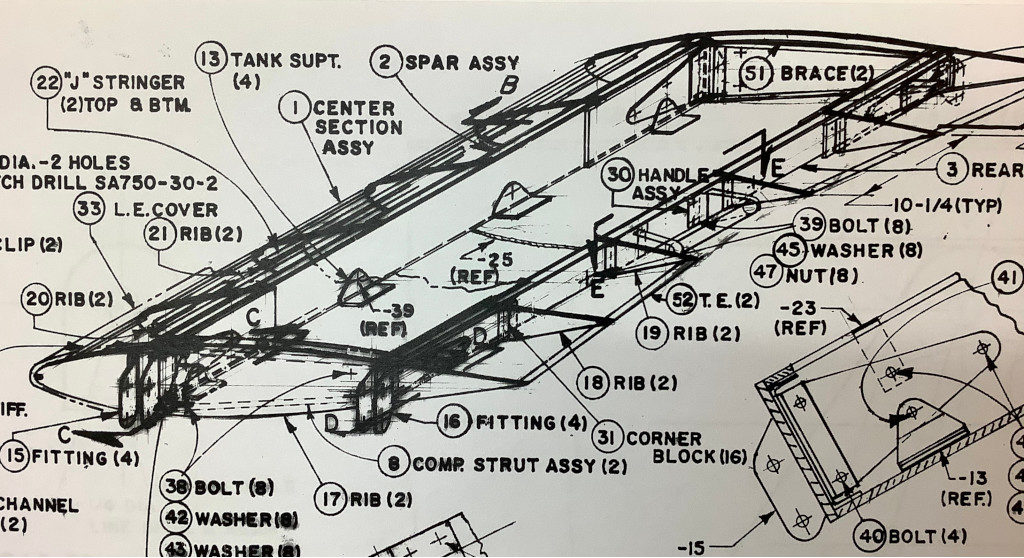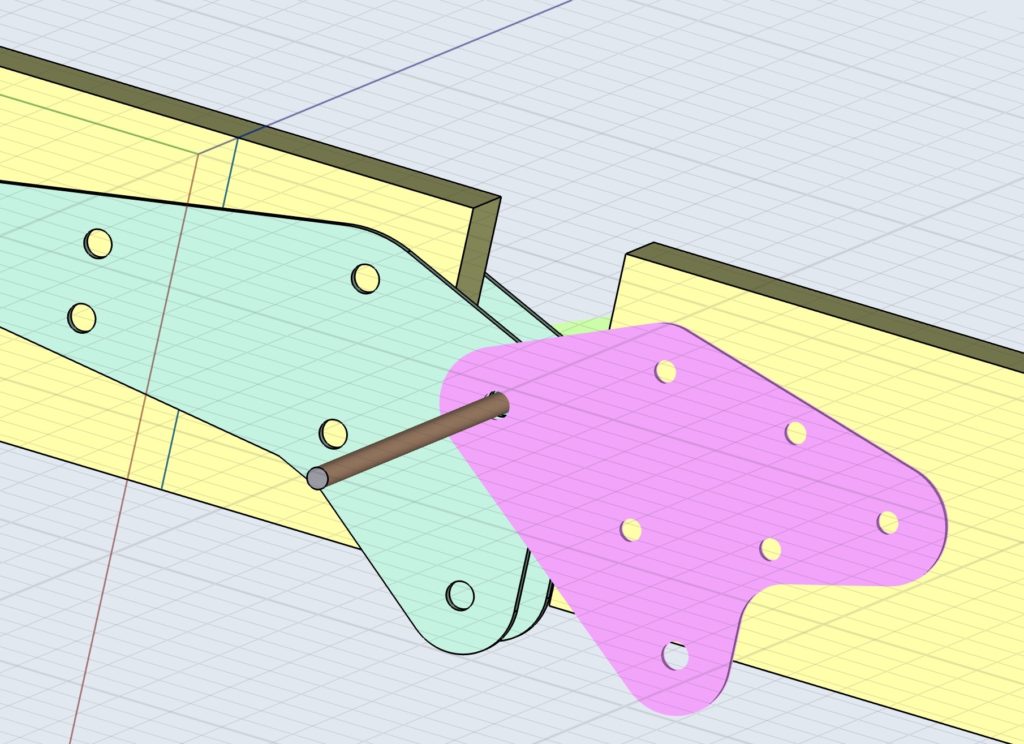Making the top wing center-section is a bit of a challenge. The drawings are not very clear. I started by making some fake parts, and see what makes sense. There is also no need for the wing-tank, which saves a bit of hardware. Given that the original construction was usually very clever, it pays to make things as the designer intended.

I also spend quite a bit of time digitizing the wing-profile, then trying to find an equivalent that is easy enough to make. Profile is very close to a standard NACA0013, so I will go with that. If I change my mind for a fatter profile, I need to adjust those plates below. A profile that came very close too is the one from an Ultimate. Either way, I’m close.



There are lots of notes on the drawings, several pages of part descriptions, but references are not always consistent, so lots of fun to figure this out!
But I think the method above should work. It’s drawn upside down. The main spar dimensions are 107 * 20 mm (yes folks, that is all!) scales down to 35 * 7 mm ( ’cause I found a stash of 7 mm rectangular pine sticks). Just needed to glue them together, and job’s done.
After this is all done, I can use this as a jig for building the cabane structure. Below is e real one. As you see the front attachment point is slightly higher then the rear one. As in it is a straight line offset from the center of the profile. It could also simply be to make life easy for the builders, because you need to have the attachment points parallel to the main frame top.

